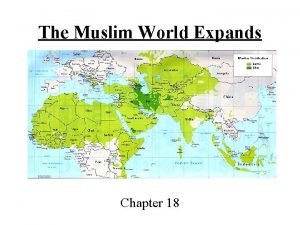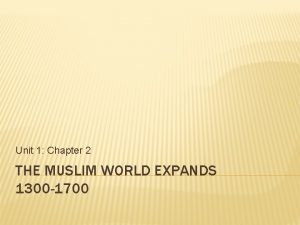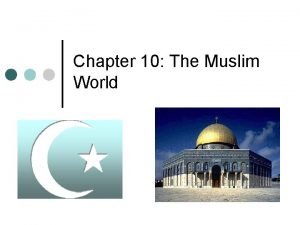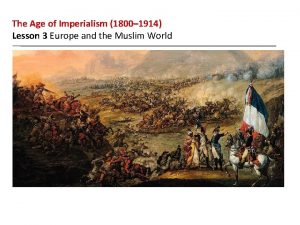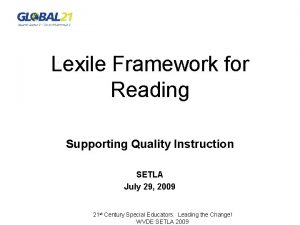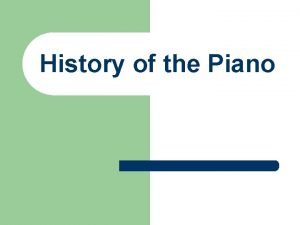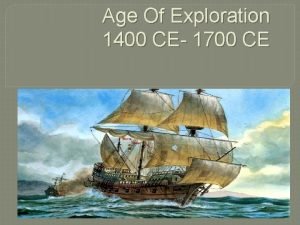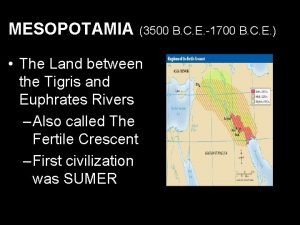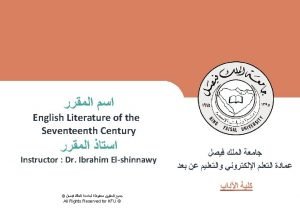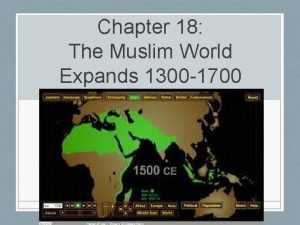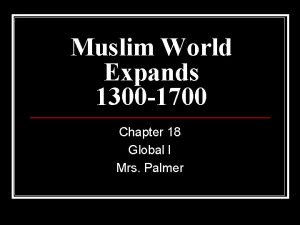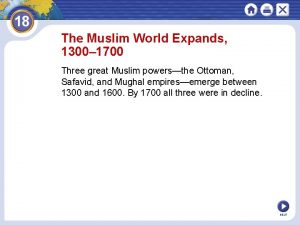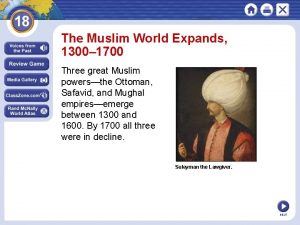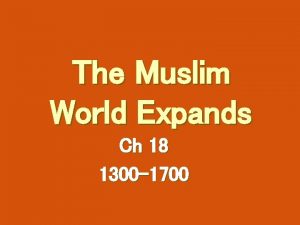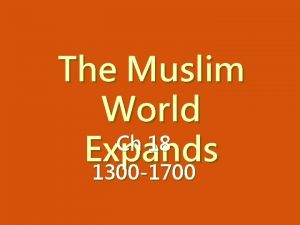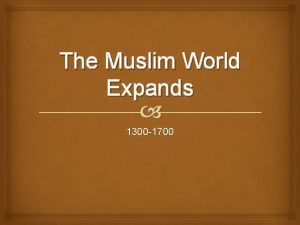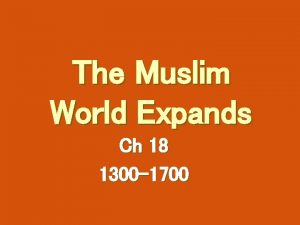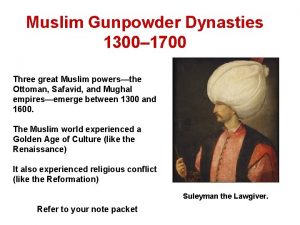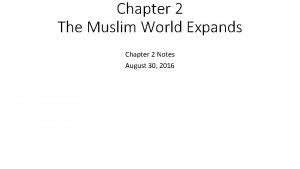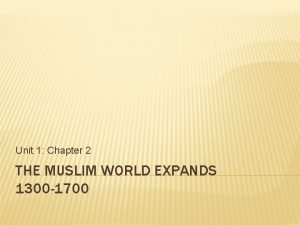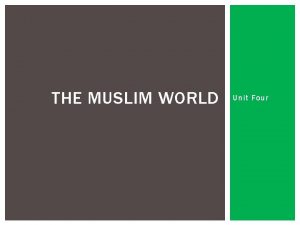QUIT The Muslim World Expands 1300 1700 CHAPTER

















- Slides: 17

QUIT The Muslim World Expands, 1300– 1700 CHAPTER 18 Chapter Overview Time Line MAP GRAPH SECTION 1 The Ottomans Build a Vast Empire SECTION 2 Patterns of Change: Cultural Blending SECTION 3 The Mughals Establish an Empire in India Visual Summary

HOME CHAPTER 18 The Muslim World Expands, 1300– 1700 Chapter Overview Between the 14 th and the 16 th centuries, three powerful Islamic empires emerge between India and the Balkans. The Ottomans of Turkey, the Safavids of Persia, and the Mughals of India successfully deal with ethnic, cultural, and religious diversity, but eventually fall prey to internal corruption and external pressure.

HOME CHAPTER 18 The Muslim World Expands, 1300– 1700 Time Line 1300 Osman founds Ottoman state. 1453 Ottomans capture Constantinople. 1526 Babur founds Mughal Empire. 1631 Shah Jahan orders construction of Taj Mahal. 1300 1700 1398 Timur the Lame destroys Delhi. 1501 Safavids conquer Persia. 1587 Shah Abbas rules Safavid Empire.

1 HOME The Ottomans Build a Vast Empire MAP Key Idea Turkish religious warriors along the Byzantine frontier capture Constantinople and build an enduring empire. Their realm combines elements from many cultures and religions and eventually stretches from the Balkans to North Africa and Persia. Overview Assessment

1 HOME The Ottomans Build a Vast Empire MAP TERMS & NAMES Overview • ghazi • Osman MAIN IDEA WHY IT MATTERS NOW • Timur the Lame The Ottomans established a Muslim empire that combined many cultures and lasted for more than 600 years. Many modern societies— from Algeria to the Balkan countries—had their origins under Ottoman rule. • Mehmet II • Suleiman the Lawgiver • janissary • devshirme Assessment

1 HOME The Ottomans Build a Vast Empire MAP Section 1 Assessment 1. List the main rulers of the Ottoman Empire and their chief accomplishments. Ottoman Ruler Major Accomplishment Osman Establishes Ottoman state Murad II Expands empire Mehmet II Conquers Constantinople Selim the Grim Defeats Safavids and captures Islamic holy cities Suleiman I Unifies and expands empire Selim II Loses the Battle of Lepanto continued. . .

1 HOME The Ottomans Build a Vast Empire MAP Section 1 Assessment 2. Do you think that the Ottomans were wise in staffing their military and government with slaves? Why or why not? THINK ABOUT • the loyalty of slaves to the sultan • the training slaves received • others who might have served in the government ANSWER Possible Responses: Yes—Slaves received excellent education and training and had the chance to rise to high positions; they were loyal to the sultan. No—Slaves were forcibly taken from their homes and would be alert for opportunities to rebel or escape from the palace. continued. . .

1 HOME The Ottomans Build a Vast Empire MAP Section 1 Assessment 3. Do you think that Suleiman’s religious tolerance helped or hurt the Ottoman Empire? Explain. THINK ABOUT • Suleiman’s treatment of non-Muslims • the effect on the individual religious groups • the long-term effect on the empire as a whole ANSWER Possible Responses: Helped—kept people of various religions happy Hurt—did not encourage people to think of themselves as part of one Ottoman nation End of Section 1

2 HOME Cultural Blending PATTERNS OF CHANGE CASE STUDY: The Safavid Empire Key Idea Interactions among diverse people in the Islamic world give rise to a new cultural mix. The Safavids draw on Shi’a religious ideology, ancient Persian traditions, and Ottoman political ideas to forge a new Persian culture. Overview Assessment

2 HOME Cultural Blending PATTERNS OF CHANGE CASE STUDY: The Safavid Empire TERMS & NAMES Overview • Safavid • Isma’il MAIN IDEA WHY IT MATTERS NOW • Shah Abbas Many world cultures incorporate influences from various peoples and traditions. Modern Iran, which plays a key role in global politics, is descended from the culturally diverse Safavid Empire. • Isfahan Assessment

2 HOME Cultural Blending PATTERNS OF CHANGE CASE STUDY: The Safavid Empire Section 2 Assessment 1. Look at the graphic to help organize your thoughts. Identify the events that enabled the Safavids to build a powerful empire. Events Effect Shi’ism becomes state religion. Isma’il builds a powerful army. Isma’il expands the empire. Trade, industry, and art flourish. Powerful Safavid Empire Shah Abbas reforms military, society, and government. continued. . .

2 HOME Cultural Blending PATTERNS OF CHANGE CASE STUDY: The Safavid Empire Section 2 Assessment 2. Within a century after the Safavids adopted Shi’a Islam, their leader, Isma’il, became a religious tyrant. Why might he have become so intolerant? THINK ABOUT • the persecution of Safavids by Ottoman Sunni Muslims • the role of religion in Safavid life • the geographic location of the Safavid Empire ANSWER Possible Response: Because the Sunni persecuted Shi’a, Isma’il wanted to strengthen Shi’ism and spread it throughout the empire. He may have believed that this was the only way to overcome Sunni opposition in Iran and from the Ottomans. End of Section 2

3 HOME The Mughals Establish an Empire in India GRAPH Key Idea The Mughals, Sunni Muslim Turks from Central Asia, conquer India and bring together Turks, Persians, and Indians in a vast empire. Overview Assessment

3 HOME The Mughals Establish an Empire in India GRAPH TERMS & NAMES Overview • Mughal • Babur MAIN IDEA WHY IT MATTERS NOW • Akbar The Mughal Empire brought Turks, Persians, and Indians together in a vast empire. The legacy of great art and deep social division left by the Mughal Empire still influences southern Asia. • Jahangir • Nur Jahan • Sikh • Shah Jahan • Taj Mahal • Aurangzeb Assessment

3 HOME The Mughals Establish an Empire in India GRAPH Section 3 Assessment 1. Look at the graphic to help organize your thoughts. Indicate the effects each leader below had on the Mughal Empire. Include both positive and negative effects in your answer. + Babur expanded the empire. Akbar left a better government and a flowering of culture. Babur - Akbar Jahangir / Nur Jahan Shah Jahan Aurangzeb Jahangir and Nur Jahan sparked religious conflict with the Sikhs. Shah Jahan made life difficult for Hindus. Aurangzeb waged costly wars. continued. . .

3 The Mughals Establish an Empire in India HOME GRAPH Section 3 Assessment 2. In what ways was the golden age of Akbar similar to and different from the flowering of the Safavid Empire under Shah Abbas and of the Ottoman Empire under Suleiman I? THINK ABOUT • the rulers’ cultural and military achievements • their tolerance of other cultures • their successors ANSWER Possible Responses: Similar—Governmental reform, cultural blending and flowering, military leadership Different—Akbar didn’t murder his sons. continued. . .

3 The Mughals Establish an Empire in India HOME GRAPH Section 3 Assessment 3. Do you think Shah Jahan made good use of his power and authority? Why or why not? THINK ABOUT • how Shah Jahan came to power • the beautiful buildings he built • conditions in India during his reign ANSWER Possible Responses: Yes—Shah Jahan kept the empire together and built magnificent buildings that reflected the empire’s glory. No—He turned his back on his suffering people while constructing beautiful buildings, living extravagantly, and pursuing war. End of Section 3
 The muslim world expands chapter 18 answer key
The muslim world expands chapter 18 answer key Where was the mughal empire located
Where was the mughal empire located Chapter 10 the muslim world
Chapter 10 the muslim world Lesson 3 europe in the muslim world
Lesson 3 europe in the muslim world Marine corps request mast
Marine corps request mast Lexile level calculator
Lexile level calculator Joseph jardin fdny
Joseph jardin fdny Piano 1700
Piano 1700 1700 ce
1700 ce 3500 bce
3500 bce Eta 1700
Eta 1700 Rivoluzione agricola 1700
Rivoluzione agricola 1700 1700 luvun aatesuunta
1700 luvun aatesuunta Rotazione quadriennale 1700
Rotazione quadriennale 1700 Puritan age in english literature
Puritan age in english literature To resize an embedded chart, ____.
To resize an embedded chart, ____. Mechanisms of evolution
Mechanisms of evolution Mobility express 設定
Mobility express 設定
